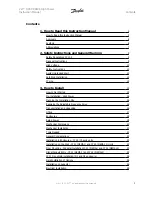
11
8.3 Connecting consumers to the generator (Fig. 2)
•
Connect the 230 V~ electrical appliances to be powered
to the socket (Item 10). Important: This socket is allowed
to be exposed to a continuous (S1) load of 1800 W and
temporarily (S2) for a maximum of 5 minutes to a load of
2000 W.
•
Do not connect the generator to the household
mains system, since this may damage the generator.
Note: Some using electrical appliances here but not
through out manual (power jigsaws, drills, etc.) may
have a higher level of power consumption when used in
difficult conditions.
8.4 Overload cut-out (Fig. 2)
230 V socket
•
The status indicator (Item 11) is lit green during normal
operation.
•
An overload has occurred if the status indicator light
goes out and the overload indicator (Item 12) light up red.
•
Reduce the level of power to be drawn.
Important: If an overload occurs, ensure that the
power drawn does not exceed the generator's
maximum power output and that no defective
electrical appliances are connected.
8.5 Switching off the engine
•
Before you switch off the generator, allow it to run
briefly with no electrical equipment connected so that it
can cool down.
•
Move the ON/OFF switch (Item 7) to the OFF position.
•
Close the petrol cock (Item 3).
9. Cleaning, maintenance, storage,
transport and ordering of spare parts
Switch off the motor and pull the spark plug boot
from the spark plug before doing any cleaning and
maintenance work on the equipment.
Important: Switch off the generator immediately and
contact your service station:
•
In the event of unusual vibrations or noise.
•
If the engine appears to be overloaded or misfires.
9.1 Cleaning
•
Keep all safety generators, air vents and the motor
housing free of dirt and dust as far as possible.
Wipe the generator with a clean cloth or blow it with
compressed air at low pressure.
•
We recommend that you clean the generator
immediately each time you have finished using it.
•
Clean the generator regularly with a moist cloth and
some soft soap. Do not use cleaning agents or solvents;
these could attack the plastic parts of the equipment.
Ensure that no water can seep into the generator.
9.2 Changing the oil and checking the oil level
(before using the generator) (Figs. 5-7)
The motor oil is best changed when the motor is at
working temperature. Pease also read the service
information.
•
Keep a suitable, leak-tight receptacle within reach
when performing an oil change.
. Undo the oil filler screw (Item 17)
. Undo the oil drain screw (Item 5) and drain the warm
engine oil through the drain channel into a container.
. After all the oil has drained out, tighten the oil
drain screw and clean the drain channel with a
cloth.
•
Add new engine oil with the oil filler funnel(Item 16)
until the top fill mark on the oil dipstick (Item 17) is
reached.
Important: Do not screw in the oil dipstick to check the
oil level – only insert it as far as the thread.
•
Use the motor oil 10W-30 or 10W-40 for general,
normal use. The motor oil 5W-30 is recommended for
G
B












































